|
|
|
|
|
October 21, 2011 -- Volume 49, Number 41 |
|
| Controlling Earthworm Casts On Golf Courses | A natural by-product shows promise
by Drs. Daniel A. Potter, Carl T. Redmond, and David W. Williams, University of Kentucky
|
 | |
Dry and muddy compacted earthworm casts on a push-up putting green. |
Excessive earthworm casts are a worldwide problem on golf courses and sport fields when they disrupt the playability, aesthetics, and maintenance of playing surfaces (3, 6, 11). Casting occurs when worms deposit their soil-rich fecal matter as small mounds, called casts, on the surface. They adversely affect ball roll and muddy and smother the grass when smeared or compacted by tires or foot traffic. In 2009 the Sports Turf Research Institute rated earthworms the number-one problem about which they receive queries.
Earthworm tunnels lessen soil compaction and provide passageways through which air and water can percolate, enhancing penetration and growth of plant roots. In addition, earthworm feeding activity stimulates microbial decomposition of grass clippings and thatch and accelerates nutrient recycling (10), so a moderate level of earthworm activity is beneficial even on golf fairways.
During the past 20 years, however, the problem of excessive earthworm castings interfering with play on golf courses has become more serious and widespread. Why? Residues of old, highly persistent chemicals like chlordane, banned many years, are finally dissipating from soils and no longer suppressing earthworms. Earthworm-toxic soil insecticides, like diazinon, bendiocarb, and carbaryl, have been replaced by chemistries that are more selective.
This article describes a promising new approach to managing excessive earthworm casts on golf courses using tea seed meal, a byproduct of tea oil manufacturing that contains natural surfactants called saponins.
Read the rest of this article
|
The Impact of Drought on Golf Course Trees
Webcast recording now available (free) | It is not too late to help one of your course's most valuable assets
by Dr. Todd Watson, PhD, BCMA |
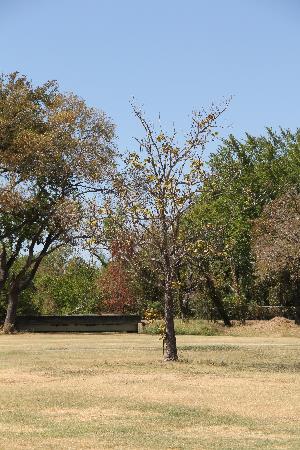 | |
Trees suffer in a drought also. Be sure to attend this free webcast on how to help your trees.
|
Editor's note: This webcast originally took place on October 14, 2011. To see and hear the recording follow the link found below.
The recent drought has had a devastating impact on trees on many golf courses in the South, but eventually all golf courses have to deal with drought-stress to plants at some time or another. Several cost-effective strategies can be utilized to limit tree losses. This webcast provided information about how to reduce drought stress to trees and how to help stressed trees recover.
Dr. W. Todd Watson, PhD has been an international plant health care consultant for over 25 years and provides consulting services to numerous companies and properties throughout the United States and other countries. He is an Adjunct Professor in the Department of Ecosystem Science and Management at Texas A&M University where he was named a Montague Teaching Scholar in 2005. In addition, he is a member of the International Society of Arboriculture (ISA) and is the President of the ISA Texas Chapter. He is an ISA Board-Certified Master Arborist (TX-0974b) and was voted Texas Arborist of the Year in 2003. He was authored several articles in research journals and professional publications, and he has provided numerous tree and landscape presentations throughout the US, Canada, and Mexico.
View the recorded webcast
Note that on most computers you can also download the recording by right clicking on the link and selecting "save link as" or "save target as" and saving the file to your computer.
|
We Need Your Input To Improve The Record
| Please complete a brief survey
by the Green Section staff |
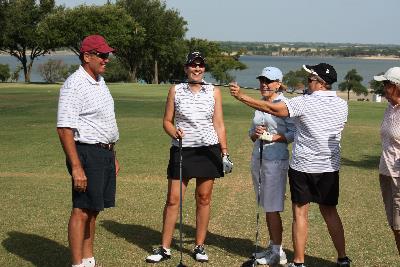 | |
Sometimes a little feedback can be a good thing
|
We greatly appreciate your feedback. This quick survey will help us continue to improve this publication.
Click here to take the survey.
|
| Rain and Good Management Can Work Wonders! |
Before and After
Below are images of the same fairway about three weeks apart. Two major events resulted in the dramatic change in condition. First, approximately three inches of rain finally fell on this drought-stressed course. Secondly, and equally important, the management staff made the difficult decision to restrict all cart traffic to the paths once the bermudagrass entered drought-induced dormancy. Thanks to this combination of a break in the weather and smart management, this course is much better prepared to endure whatever the winter brings.
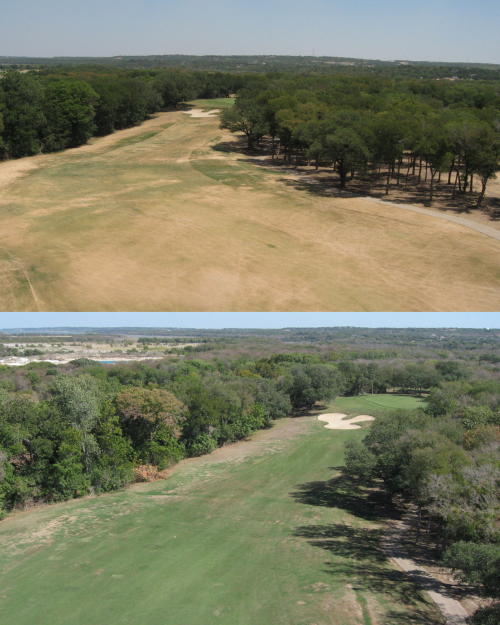 | |
|
|
Regional Updates
|  Florida Region Florida Region
by Todd Lowe, senior agronomist
|
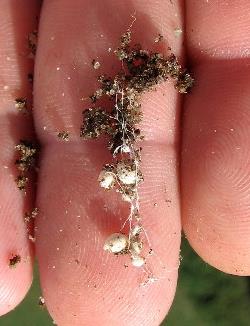 | |
Mycelial strands and small fruiting structures from a fairy ring fungus.
|
Recurring Nuisance Fairy Rings
Fairy rings can occur on golf courses at any time in our region, but are especially problematic during rainy summer months. Fairy rings are created by different types of fungi that inhabit soil and feed on organic matter. Green Type II rings occur as the fungi break down lignin in organic matter and release nitrogen for turf uptake. Detrimental Type I rings occur if the infected areas become hydrophobic from substances that coat sand particles, where the fungus resides.
There are several fairy ring types, but large damaging Type I rings have been observed on several golf courses over the past month. This past month has also seen above-average rainfall that has encouraged fairy ring development and recurrence. A soil sample from a recent TAS visit revealed a mass of white strands and attached objects that resembled small cotton balls. Dr. Mike Fidanza of Penn State University identified them as mycelial strands with small fruiting structures. Other signs that sometimes accompany fairy rings include orange coloration within the organic matter and a strong mushroom odor.
Read the rest of this update
 Southwest Region Southwest Region
by Brian Whitlark, agronomist, and Dr. David Kopec, Plant Specialist, University of Arizona
Top 5 Practices To Avoid During Overseed Preparations Golf course superintendents are in the midst of preparing the bermudagrass for overseeding right now in the desert southwest. The following summary points highlight the top 5 practices to avoid during overseeding preparations. - Aggressive verticutting
- Spray a growth regulator prior to raising heights
- Excessive scalping
- Apply excessive nitrogen rates immediately prior to overseeding
- Heavy topdressing on greens following seeding
To see more detail on each of these points read the rest of this update.
 North Central Region North Central Region
by Bob Vavrek, senior agronomist 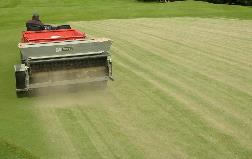 | |
A moderately heavy application of sand just before the snow arrives can help protect turf from wind desiccation. The keys to success are (1) to topdress when the greens are firm enough to accommodate the equipment without rutting, and (2) to apply just the right amount of sand to bury the crowns of the plants without smothering the turf.
|
The Poor Man's Winter Cover
Days are getting shorter and morning frost delays are getting longer. Mowing transitions into leaf removal and it's time to think about how the course will be put to bed for the winter.
Do I cover or not cover the greens? What kind of cover is best, or do I need different covers for different greens? Can I afford covers? Do I have enough labor to install and remove covers efficiently? When do I apply the cover and when do I remove the cover? Do I have adequate space to store the covers? What do I tell the boss if winterkill still occurs under the cover? There are no simple, clear-cut answers to these questions, and a short Regional Update is not the venue to discuss or debate the issue of covering greens.
Of course, the debate ends instantly if your golf course simply cannot afford covers, but there is still an economical option to consider for providing a basic level of winter protection to greens. A moderately heavy application of sand topdressing to the putting surfaces during late fall/early winter after snow mold fungicides are applied will provide a fair amount of protection from wind desiccation during an open winter. Follow a few basic topdressing rules and there is significant reward for little risk at minimal cost.
Read the rest of this update
 Mid-Atlantic Region Mid-Atlantic Region
by Keith Happ, senior agronomist It's That Time of Year - Recovery and Rejuvenation Is a Priority!  | |
Fall colors can be spectacular, however, leaf collection must occur before fall recovery and rejuvenation programs can be initiated.
|
The fall brings us changing colors and moderate temperatures. Leaves are turning colors rapidly, and in many areas of the region, early fall frost has triggered significant leaf drop. The abundant color can be beautiful, but the leaf cleanup process is all-consuming (and all important) for golfers and turf managers. At the same time, fall golf course work must be completed to allow for rejuvenation of damaged and stressed grass from the summer. Golf course superintendents cannot invoke the "leaf rule", but golfers often use the leaf rule when playing in the fall. It can be frustrating when that slightly-off-line shot ends up under leaves. Turf managers know that the leaves need to be removed, or at least mulched. With luck, golfers will exercise patience when playing this fall. While making USGA Green Section Turf Advisory visits, we have seen lots of crews out cleaning up their courses. They are also trying to complete their important turf rejuvenation and recovery programs, such as reseeding the rough, sodding small damaged areas, and distributing fertilizer. It would be great if all the leaves fell in just a few days, but this seldom occurs. Priorities need to be established, and the weather patterns often dictate what tasks must receive attention first. For turf recovery and rejuvenation to occur, leaves must be removed so that when seed is sown, maximum soil contact can be achieved. Read the rest of this update  Northwest Region Northwest Region
by Derf Soller, agronomist It's time to rise to the occasion! This update involves two topics. One is about common sense and turf health. The other is about good people and the future health for the game of golf.
Rising to the occasion for turf health is simply raising the height of cut (HOC) of your putting greens prior to the winter season that is falling upon us throughout the Rocky Mountain Region. Although this seems like a no-brainer, there are still many courses that don't do this, or put it off too late to make it happen. And there is really no excuse for not raising the height of your greens.
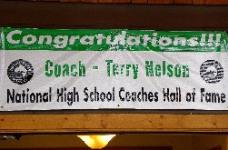 | |
Green Section Committeeman, Terry Nelson, recently received the National High School Coaches Hall of Fame Award for his many years of coaching young golfers.
|
While some courses in the higher elevations may already have snow cover, superintendents in these locations figured out some time ago that bringing up their mowing heights on greens can help them have a more healthy turf going into winter. Most raised their HOC starting in mid-September. (Read more about the practice of raising cutting heights by selecting the link below). Secondly, I'd like you all to Rise to the Occasion and recognize one of our volunteer committee persons, Mr. Terry Nelson, of the Whitefish Lake Golf Course, Whitefish, MT. Terry has been a member of the Green Section Committee since 2000 and has played an active role in the game of golf long before he joined the committee. Terry recently received the National High School Coaches Hall of Fame Award for his many years of coaching young golfers! His years teaching the game of golf, and his volunteer activities with the Green Section, demonstrate his passion for the game and all it has to offer. Please visit this link to read more about Terry's accomplishments and recognition. Congratulations, Terry, on a well deserved award! http://www.whitefishlife.com/2011/09/hall-of-fame-golf-coach-terry-nelson.html Read the rest of this update |
|
Forward The Record To A Friend | It's Easy To Share This Publication With Others
by the USGA Green Section Staff | Each Green Section Record issue includes articles and information that appeal to golfers and those who work in the game. Please help us distribute this publication as widely as possible. The best way to do this is to click the "Forward to a Friend" button below.
Thanks for your help! |
| Green Section Record Archive | Looking for a previous issue of the Green Section Record?
|
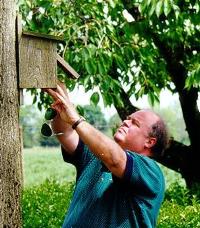 | |
Looking for something? |
The Green Section Record has been published under various names since 1921 and iscomposed of an amazing collection of full-text articles and photos. This collection is stored and maintained by the wonderful library staff at Michigan State University in the Turfgrass Information File (TGIF). All past issues of the Record, including this one, can be accessed free-of-charge by following this link.
Search the Green Section Record |
|
The USGA Green Section Portal | A Valuable, Free Resource
|
Take a minute to visit the Green Section's portal at http://gsportal.usga.org to find information regarding upcoming live webcasts and links to recordings of more than 30 previously-delivered webcasts and announcements of upcoming USGA Green Section activities, education conferences, and meetings.
|
|
|
|
| USGA Green Section
P.O. Box 708
Far Hills, NJ 07931-0708
908.234.2300
| |

©2011 by United States Golf Association®
Permission to reproduce articles or material in the USGA Green Section Record is granted to
newspapers, periodicals, and educational institutions unless specifically noted otherwise. All materials
must be used in their entirety. Credit must be given to the author, the article's title, the USGA Green
Section Record, and the issue's date. Copyright protection must be afforded. No material may be
copied or used for any advertising, promotion or commercial purposes.
Green Section Record (ISSN 2156-5813) is published weekly via electronic mail by the
United States Golf Association®, Golf House, Far Hills, NJ 07931.
|
|
|
|
|
|